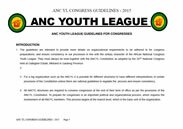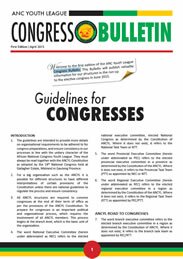Bundling Auto and Home Insurance: When It Really Saves You Money
When you bundle your auto and home insurance, you’re promised savings and simplicity, but it isn’t always as straightforward as it sounds. Some deals look appealing at first glance, only to reveal hidden costs or limited benefits. If you're wondering whether combining your coverage actually puts more money back in your pocket or just adds convenience, there are important factors you should weigh before making a decision—and some details you definitely don’t want to overlook.
Understanding Bundled Insurance Discounts
Bundled insurance discounts can significantly reduce annual premiums for consumers. By combining Auto and Home insurance policies with a single provider, individuals may benefit from discounts typically ranging between 10% and 25%. This approach not only consolidates coverage but also simplifies the claims process and payment management, as policies are housed under one provider.
Insurance companies offer these discounts as an incentive to retain customers and to reward individuals who demonstrate safe driving habits or maintain a responsible credit history.
It is essential, however, for consumers to compare quotes from various insurers, as bundling may not always yield the most favorable financial outcome for every individual. The decision to bundle insurance policies should be based on personal circumstances and financial needs.
For those considering this option, thorough research and comparison are advisable to ensure that the chosen plan aligns with their specific requirements.
Evaluating Potential Savings
When considering the potential savings from combining your auto and home insurance policies, it's important to examine a few key factors. The amount you may save will be influenced by the specifics of your coverage, the insurance providers you are evaluating, and the regulatory environment in your state.
Bundling your auto and home insurance with a single provider can lead to discounts, which typically range from 10% to 25%. Based on this percentage, annual savings could amount to between $220 and $550 when compared with maintaining separate policies.
It is advisable to obtain quotes from multiple insurers, as pricing and available discounts can differ significantly.
To maximize your savings, it is essential to select a company that aligns well with your financial profile, including credit standing, driving history, and payment preferences. This strategy can help ensure that you receive the most appropriate coverage at the best available rate.
Weighing the Benefits Beyond Cost
While the primary motivation for bundling auto and home insurance often centers around cost savings, there are additional benefits that warrant consideration. Bundling allows policyholders to consolidate their insurance needs with a single provider, which can simplify the management of policies, payments, and claims.
Using one company for both types of coverage means that individuals can maintain their account and personal information in one location, potentially streamlining the claims process.
Moreover, insurance companies frequently offer supplementary coverage options, roadside assistance, or improved rates for bundled policies, which might not be available through separate policies. This can result in a more comprehensive protection strategy.
Additionally, maintaining multiple policies with the same provider can lead to enhanced loyalty discounts over time, which can contribute positively to a customer's credit profile.
It is advisable for consumers to carefully review the available offers and recommendations to assess whether bundling is beneficial in their specific circumstances. Understanding these factors can aid in making informed decisions regarding insurance coverage.
Situations Where Bundling Makes Sense
When considering insurance options, bundling auto and home policies can be a practical choice, particularly if you seek both cost savings and ease of management.
Bundling involves consolidating your auto and home insurance with a single provider, which can lead to annual savings typically ranging from $220 to $550. Many insurance companies offer discounts for bundled policies, with reductions between 10% and 25% off standard premiums.
For individuals with solid credit and a strong driving record who are interested in comprehensive coverage, bundling can be a more advantageous route.
In addition to potential savings, managing policies through one provider can simplify various administrative tasks, including payment processing, filing claims, and updating personal information.
However, it remains essential to conduct a thorough comparison of quotes from different insurers. Evaluating separate policies against potential bundled options can help ensure that you receive the best overall value for your insurance needs.
When Bundling May Not Be the Best Option
While bundling auto and home insurance is frequently promoted as a method to achieve financial savings, it is essential to recognize that this approach does not universally guarantee the most favorable rates or coverage for all individuals.
Those with high-risk driving histories or unique property situations may be more likely to find advantageous offers, rates, and coverage by selecting separate policies from various insurers. Additionally, specialized requirements—whether they pertain to personal needs or business operations—may not be adequately addressed by a single provider's bundled options.
It is advisable to conduct a thorough comparison of policy information and quotes, taking into account various factors such as payment terms and potential discounts associated with each policy. This exercise helps ensure that one is not incurring unnecessary expenses for redundant coverage or services, such as roadside assistance, that may not provide practical value.
In summary, a careful review is recommended prior to deciding to combine multiple insurance products.
Comparing Top Insurance Companies for Bundling
When assessing potential savings, it is important to systematically compare leading insurance companies that offer bundling options for auto and home policies. Geico frequently presents competitive rates, with discounts potentially reaching up to 25% for bundled policies, which may be advantageous for those looking to reduce overall costs.
Farmers Insurance, on the other hand, provides bundling options in nearly all states, which can streamline the management of accounts, payments, and claims through a single platform.
It is essential to recognize that various insurers have differing levels of coverage, roadside assistance, and policy features. Therefore, obtaining personalized quotes from multiple providers is a critical step in the evaluation process.
In some instances, bundling policies with one provider may yield greater savings; in other cases, maintaining separate policies could be the more economical choice. Careful comparison of these factors will enable consumers to make informed decisions regarding their insurance needs.
How to Effectively Bundle Policies
To effectively bundle your auto and home insurance policies, begin by researching several reputable insurance providers and obtaining quotes for comparison. This allows you to evaluate both pricing and coverage levels comprehensively. Ensure that the terms of each policy are clear, as bundling typically involves consolidating multiple policies under a single insurer.
It is important to verify that the effective dates of the combined policies align, as discrepancies may create coverage gaps. When assessing potential savings, review any early termination fees associated with separate policies to determine if bundling will be financially advantageous. Insurers often provide discounts for bundled policies, which can range between $220 and $550 annually, depending on the provider and individual circumstances.
Additionally, consider any supplementary benefits that may come with bundled policies, such as roadside assistance or an integrated claims process, which may enhance overall value.
It is advisable to methodically analyze all offers and weigh the benefits against your specific needs, rather than assuming that bundling is always the optimal choice.
Key Factors to Consider Before Bundling
Before considering the bundling of your auto and home insurance policies, it is essential to examine the specifics of each policy and compare quotes from various insurance providers. Bundling entails consolidating your auto and home coverage under a single insurer, which may offer discounts ranging from 10% to 25%.
However, it is important to note that the overall cost of coverage may be influenced by the most expensive policy, possibly negating any potential savings. Ensure that the effective dates of both policies align to avoid gaps in coverage and verify whether any early payment termination fees may be applicable if you decide to switch carriers.
In addition to price, evaluate the services included, such as roadside assistance, the claims process, and account management features. It is advisable to review any potential coverage gaps that may arise from bundling, as well as the differences in offerings from various insurers.
Additionally, consider how bundling might affect your credit and whether maintaining separate policies could be more beneficial for your specific situation. Careful analysis of these factors will help determine if bundling is a prudent decision for your insurance needs.
Ongoing Policy Review and Management
Regularly reviewing your auto and home insurance policies is a necessary practice for effective cost and coverage management. Insurance rates can change over time, and new discounts may become available from various insurers.
Maintaining your policies with a single provider may not always yield the best overall value. It is advisable to evaluate the benefits of bundling policies, which often offers discounts ranging from 10% to 25% when auto and home coverages are combined.
Additionally, it is prudent to compare quotes from different insurers to determine if your current policy is competitive. Ensuring that your personal information, payment methods, and claims process details are up to date is also critical for smooth operation.
Furthermore, utilizing available tips, conducting credit checks, and staying informed about industry news can aid in making informed decisions regarding your insurance needs.
Conclusion
Bundling your auto and home insurance can simplify your finances, streamline claims, and often reduce your total premium. Before making the switch, take time to compare policy details, review your coverage needs, and check insurer reputations. Bundling isn’t always the automatic best choice, but it might reward you with savings and convenience. Evaluate your situation carefully, and don’t hesitate to seek advice to ensure your policies support both your budget and long-term goals.

 Documents
Documents











